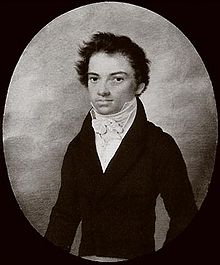Draft:2 Preludes through all the Major Keys (Beethoven)
| Submission declined on 13 December 2024 by AirshipJungleman29 (talk). This submission's references do not show that the subject qualifies for a Wikipedia article—that is, they do not show significant coverage (not just passing mentions) about the subject in published, reliable, secondary sources that are independent of the subject (see the guidelines on the notability of music-related topics). Before any resubmission, additional references meeting these criteria should be added (see technical help and learn about mistakes to avoid when addressing this issue). If no additional references exist, the subject is not suitable for Wikipedia.
Where to get help
How to improve a draft
You can also browse Wikipedia:Featured articles and Wikipedia:Good articles to find examples of Wikipedia's best writing on topics similar to your proposed article. Improving your odds of a speedy review To improve your odds of a faster review, tag your draft with relevant WikiProject tags using the button below. This will let reviewers know a new draft has been submitted in their area of interest. For instance, if you wrote about a female astronomer, you would want to add the Biography, Astronomy, and Women scientists tags. Editor resources
|  |
| 2 Preludes through all the Major Keys | |
|---|---|
| by Ludwig van Beethoven | |
 Beethoven in 1789, by Joseph Neesen | |
| Key | all major keys |
| Opus | 39 |
| Composed | 1789 |
| Published | 1803 |
| Scoring | Piano/Organ |
2 Preludes through all the Major Keys, Op. 39, is a set of two preludes by Ludwig van Beethoven. Composed in 1789, they were published in December 1803, along with his Romance No. 1 for Violin and Orchestra, Op. 40, and a Serenade for Piano and Flute, Op. 41. Although the original autograph is lost, a copy from Artaria still exists in Berlin.[1]
The first prelude is 6 minutes long, which gives a substantial amount of time for key changes.[1] Each key occupies between 2 and 26 measures in length, starting and ending in C major. The original ending to this prelude is now its own composition, catalogued as Hess 310.[1] The second prelude is highly virtuosic, as it cycles through all the keys twice in less time than the first prelude, starting and ending in C major.[2]
References
[edit]External Links
[edit]- 2 Preludes, Op. 39: Scores at the International Music Score Library Project
